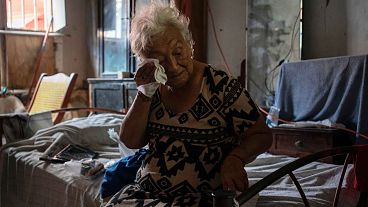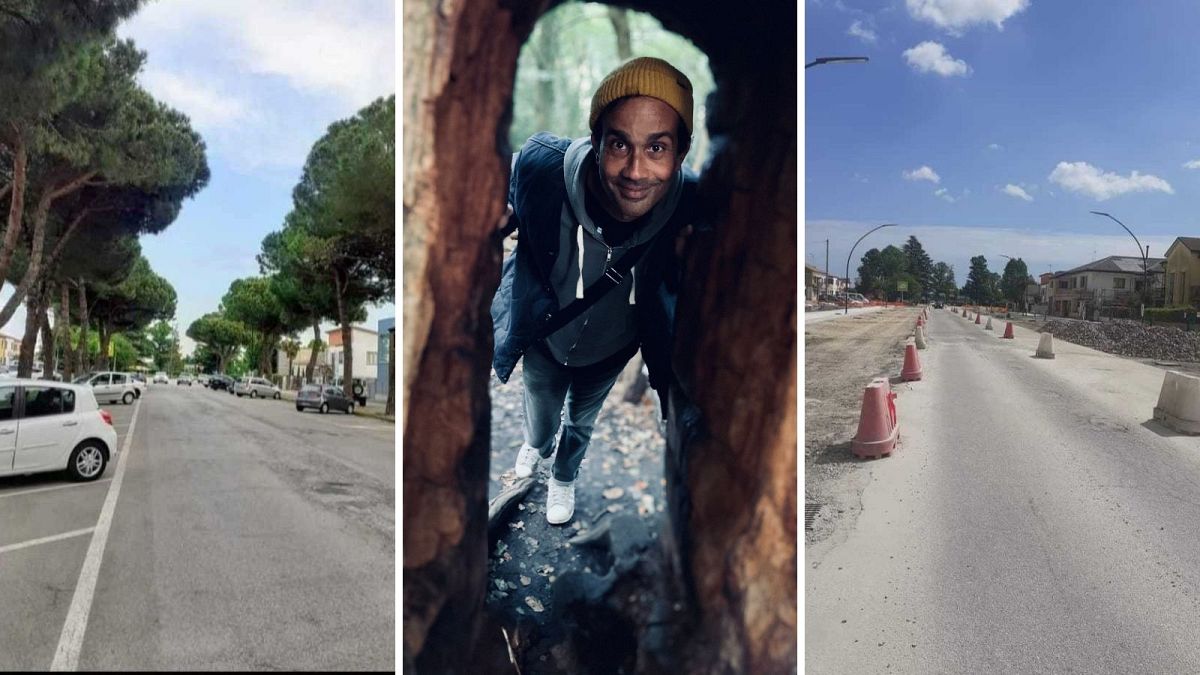For some, there’s a deep emotional reaction to seeing drastic changes to their familiar natural environment.
Last year, the felling of a tree became one of the UK’s biggest news stories. When the Sycamore Gap tree along Hadrian’s Wall was illegally cut down, the reaction from the public was not just one of outrage but of profound sadness.
But it’s not just the UK. Across Europe, councils often chop down trees to the dismay of those who have come to love the arboreal cityscape.
It’s not just the emotional impact that inspires residents to speak up for this vital symbol of nature. Their carbon drawdown power is taken away too, along with biodiversity and shade.
Here are three first-person accounts from people in Europe about how they have felt when trees have been cut down where they live.
‘It was too big, too strong to fall - until now’: Gareth Jenkins, UK
It was a hard day. I heard the saws when I left for work but didn’t dare look. When I got home, it was gone.
It was a magnificent tree, at least 20 metres tall with a broad and beautiful crown. It must have been hundreds of years old. It stood there alone, framing our street, pulling our gaze up from this dreary suburbia.
So many other trees on this street had died recently - heat stress from record-hot summers, droughts or sodden soils, but not this one. It was too big, too strong to fall - until now.
I went over to see what had happened. Two neighbours came out. They were in a celebratory mood. One said it was blocking the light, the other that the birds caused a mess on their car. I looked at the car, a six-year-old red Nissan. Soon it would be traded up for a new one.
A few years beyond that, these people would be gone too. We all would be. And the tree could have still been standing there, drawing down carbon, letting some of the ever heavier rains drain away and giving countless species some respite from the tarmac.
I wish I had stopped by and introduced myself to those neighbours before. Maybe if I had told them of the wonders of that tree they might not have chosen to sever us all from it.
I wish I had told them that we are suffering from a terrible collective amnesia of what was, and a terrible lack of imagination of what could be.
Now I want to be swallowed by that amnesia. I just wish that the tree would still be there when I get home.
‘It was heartbreaking’: Susana de la Higuera in Madrid, Spain
Susana is the vice-president of the Asociación Vecinal Pasillo Verde Imperial (Imperial Green Corridor Neighborhood Association) and the spokesperson for the No a la Tala movement.
In February 2023, a red and white fence appeared in the middle of Arganzuela Park in Madrid, which triggered one of the biggest citizen protests in the city against the felling of trees.
It was part of works to extend the metro, approved by an Environmental Impact Assessment (EIA), which intended to cut down 79 trees all in one line and 22 in another.
But when this fence appeared in the middle of the park, we discovered that the regional government had changed the project without informing the public and without a new EIA: the felling of trees skyrocketed to 1,027 all in a line and about 250 in the Arganzuela Park, a protected green area.
At the first protest, we were just three adults and two kids who went to the park with a few sheets of paper and markers. We wrote “I defend this tree” and put the signs on the condemned trees inside the fence. That is how it all started.
People joined in and the next day we were able to organise a human chain inside the park. It got to the press and from that moment it was a tsunami of citizen protest.
The movement expanded with many other organisations and ordinary people joining in. After months of many actions, we managed to save half of the trees - about 500.
In a city like Madrid where climate change makes it necessary to fight against the heat and heat islands, it is nonsense and a crime to destroy consolidated green areas and mature trees, just because it is easier and faster to do the work this way and you don’t disturb the traffic.
Another reason that prompted me to act was the social impact of losing green areas and parks, not only the environmental impact. I remember the reaction of a lady when she discovered her park was going to be destroyed. She was 89. She was in tears. It was her life.
She had been in that park with her children when they were little and later on with her grandchildren. Now it was her daily walk. “Where am I going to? I cannot walk much anymore.” It was heartbreaking.
So today, when I see that most of the trees of the park have been saved and I look at elderly people, families and young people enjoying themselves there, I’m happy so many people stood up, fought together and united to make this possible.
I hope and believe this has triggered a movement to make cities greener and more liveable.
‘I realised how cruel the process was’: Sabrina Guarnieri in Adria, Italy
I remember the day that the council cut down the trees in front of the town’s theatre. I remember the plant of laurel that shaded the square.
I remember the desperate flight of two blackbirds who you could see flapping around disorientated and terrorised. For a couple of days, they circled the area crying, before having to find another nest. This really affected me, I realised how cruel the process was.
In Italy, some 30 per cent of roads are covered in asphalt, so we really need trees. At the moment with this extreme heat, you can really feel the impact of the lack of trees.
I’ve heard people saying that my city lacks oxygen. More than 100 trees, some even hundreds of years old, have been felled over the years in Adria. It is shameful and a terrible example to future generations.
Along the river banks too, the council needs to plant fruit trees like there used to be in the past. We are losing native plants like figs, elderberry and blackberries. Replanting these should be the future.
Unfortunately, however, everywhere I see decapitated trees and it is obscene. Along one of the town’s main streets, they recently chopped down around 60 healthy maritime pines leaving just stumps.
It should be called an assassination. What’s more, it was done a couple of days before the schools here celebrated Tree Day. The irony is galling.















